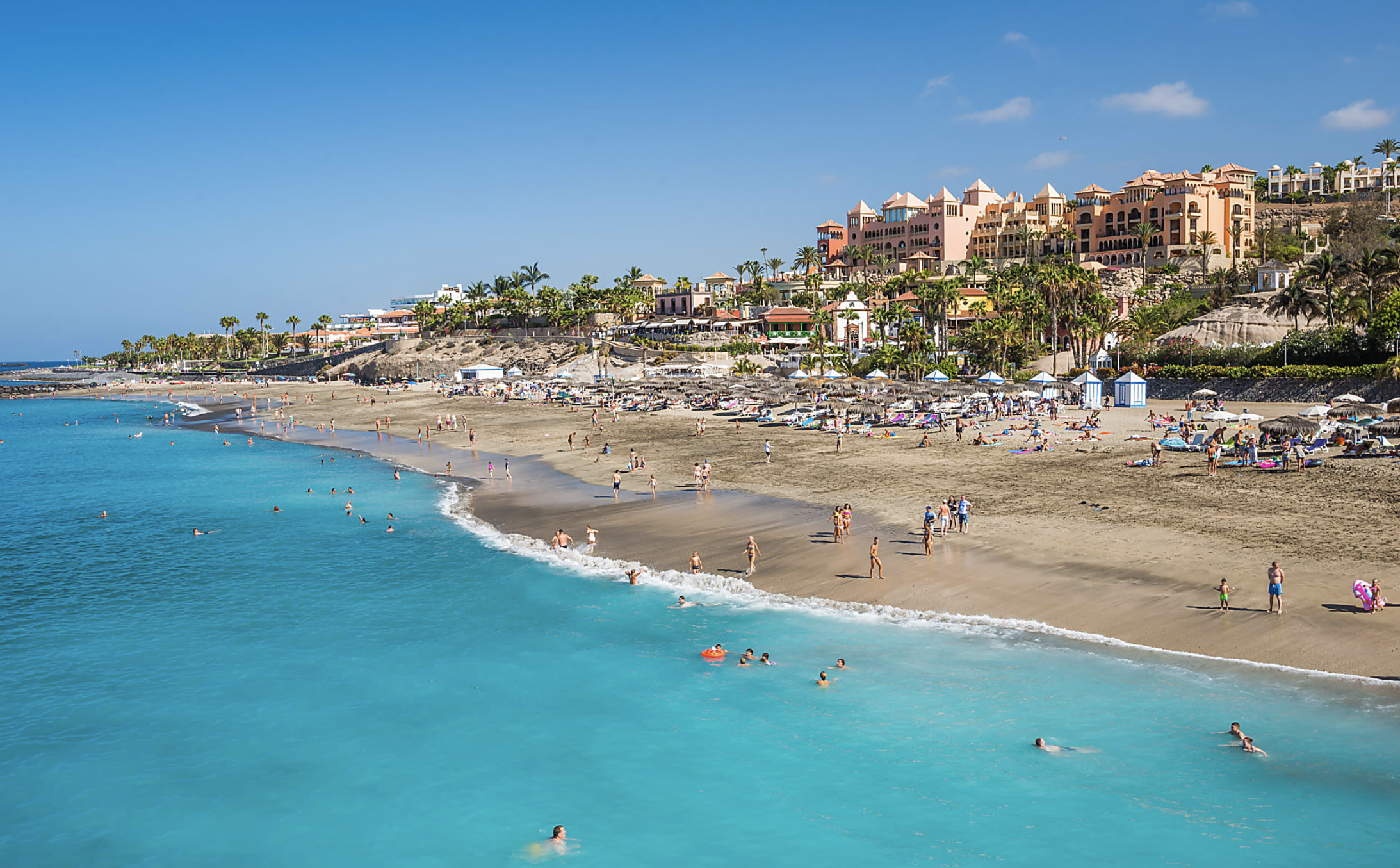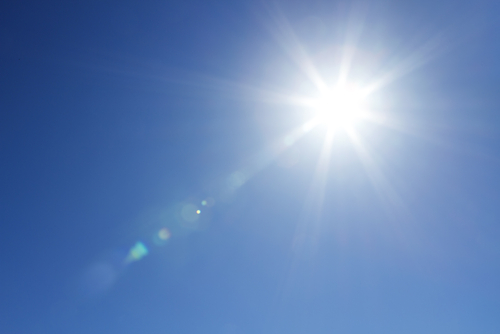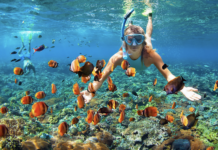Whether you travel to the Canary Islands every summer or you are new to Tenerife, Here are Top 10 facts about the weather in Tenerife which you may not know about.
1. It’s consistent in temperature throughout the year ☀️
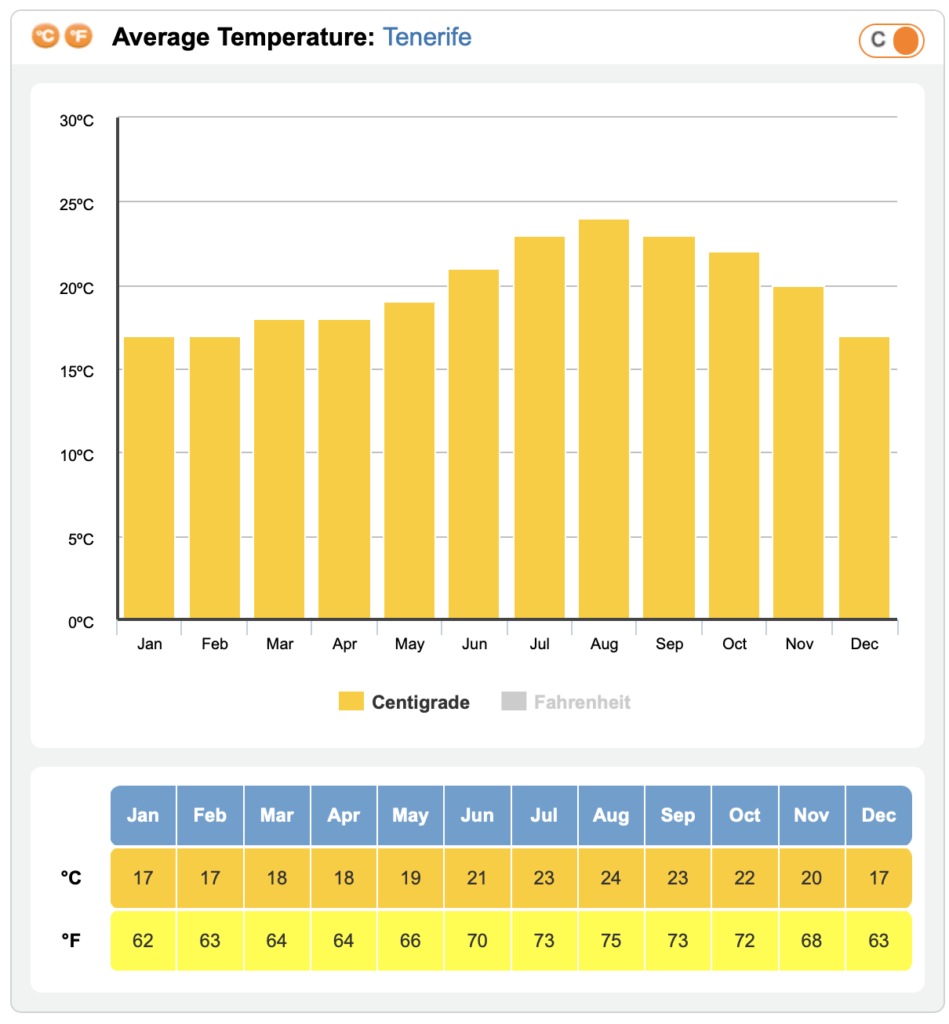
Yes, the temperature in Tenerife stays on average at 18C through winter and then between 20C and 30C throughout the rest of the year. It hardly rains in the south and the sea is warm enough to swim in right throughout the year. See Tenerife Weather averages.
This makes Tenerife and the rest of the Canary Islands year-round holiday locations due to the consistently good weather year-round and only a 4-hour flight from the UK.
2. The south is warmer than the north – Rainshadow effect 🌧
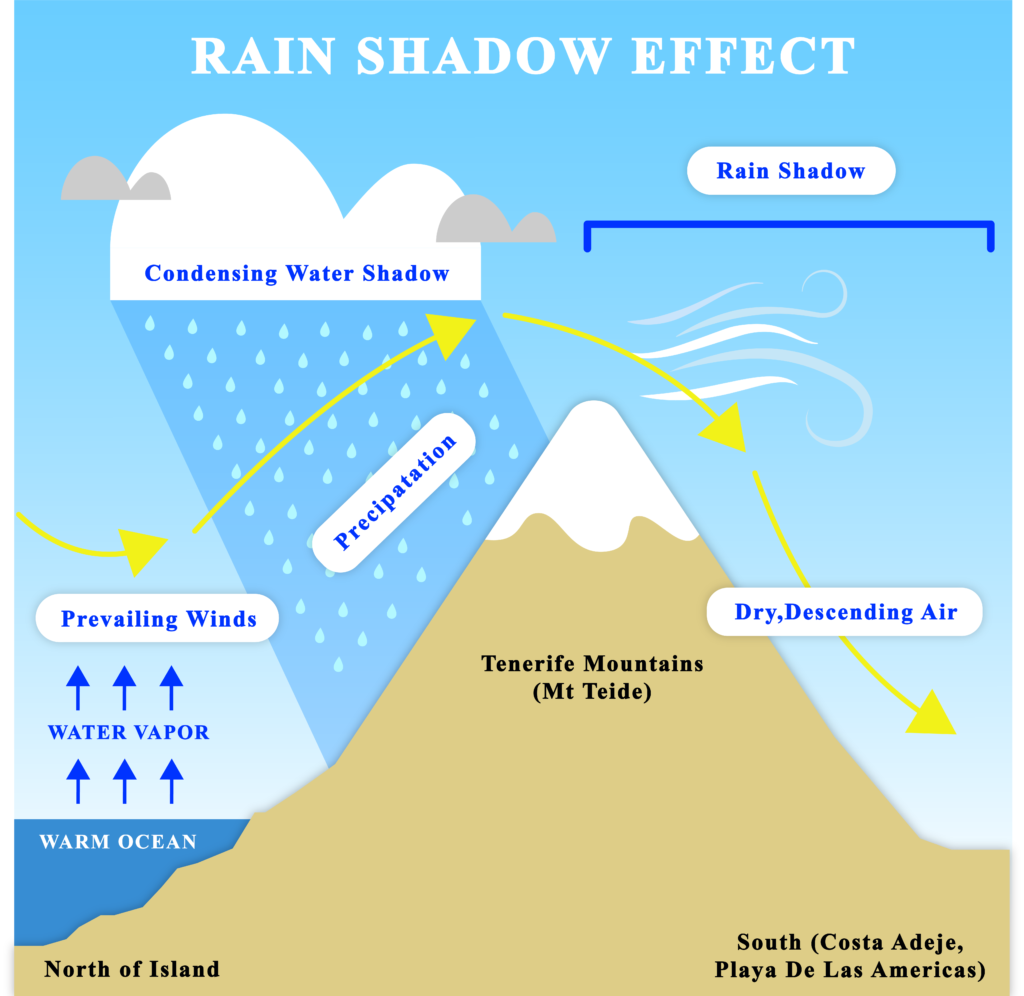
Especially in the winter, the south of the island including resorts like Adeje, Playa de las Americas are warmer than the north because it is flatter, arid, and faces south and east thus affected by dry weather coming from the Sahara in Africa.
Further Mount Teide and the Tenerife mountains are a barrier to the wind towards the south and most of the rain then falls in the North East of the island. And this creates the Rain Shadow Effect in the south: the dry leeward side which makes the south of Tenerife warmer than the north and with less rainfall.
Almeria, Murcia, and Alicante are all other locations in Spain that are dry and have warm climates due to the Rain Shadow Effect. Probably the biggest influence of the Rain Shadow effect is Northern India because of the Himalayas to the north of there protecting it from the more unsettled weather conditions.
3. The Canary Current keeps the island cool 🌊
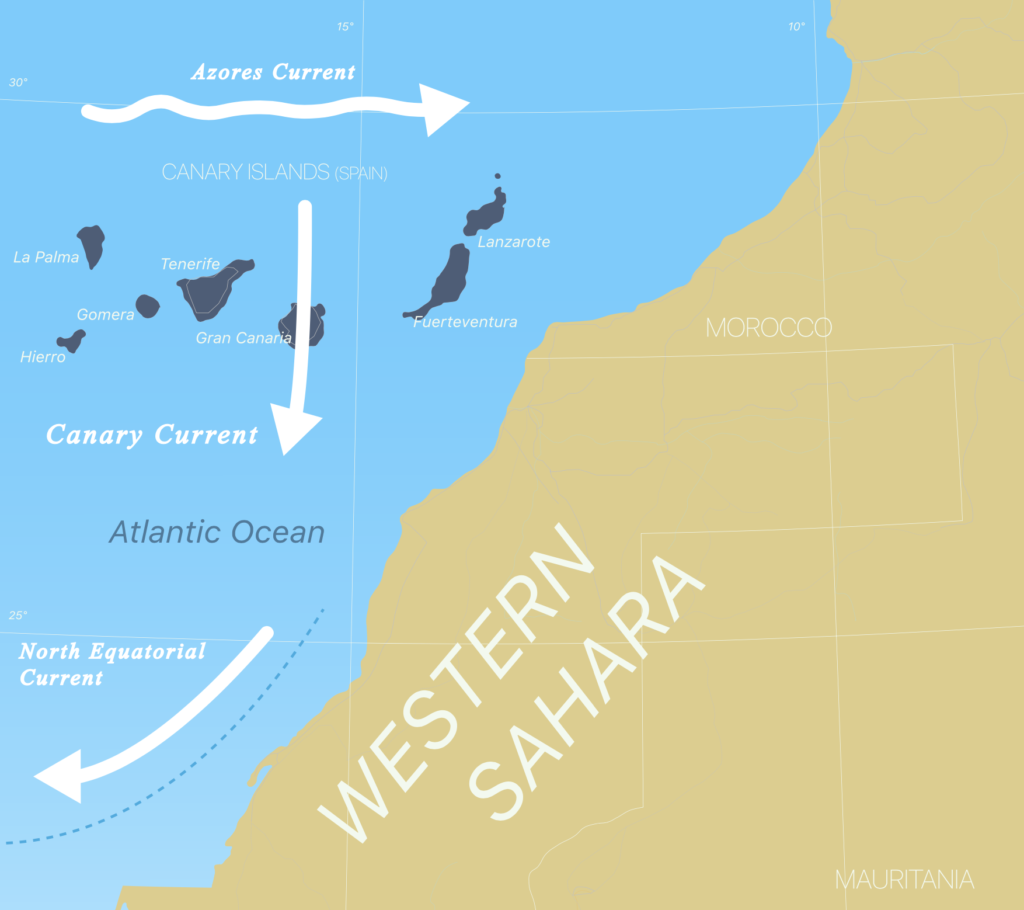
You would probably think Tenerife is always hot, well it is as average temperatures are never less than 17C. However, given its latitude and its weather being derived from the boiling Sahara to the east it should be much hotter but it isn’t and that is due to the Canary Current.
The Canary Current branches off from the North Atlantic Current and flows southwestwards along the African coast.
It then turns west to join the Atlantic North Equatorial Current. The sea temperature is cool here which is caused by offshore winds from off the North-West African countries and this cools down the Canary Islands.
So even though it is called the Canary Current, this current actually starts in the North Atlantic and goes as far south as Senegal.
More in-depth information on the Canary Current can be found here on Wikipedia.
4.Volcanic effect on the weather 🌋
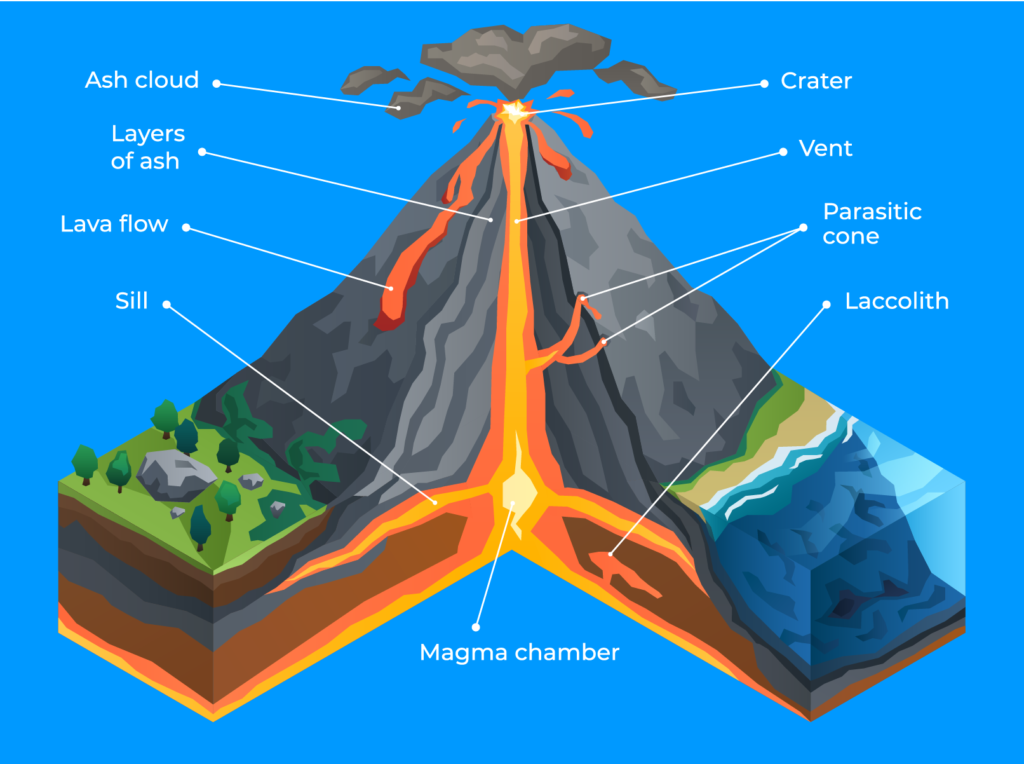
Tenerife being a Volcanic Island like the other Canary Islands has a landscape of lava and volcanic residue from eruptions when it was formed millions of years ago.
This results in a landscape in the south of solidified dark lava with no chance of any vegetation. This dark landscape absorbs the sun.
5. Black Sand beaches absorb the heat ⚫️
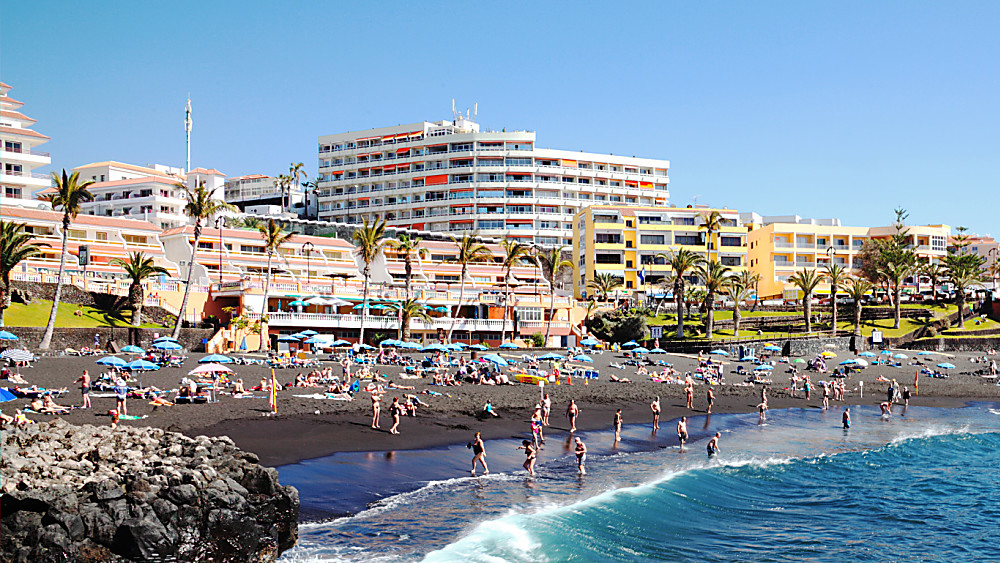
When a volcano erupts the lava enters the sea and quickly dissolves into basalt, tiny grains of black sand.
This can happen overnight after a volcanic eruption with a whole black beach being formed!.
As black sand absorbs more sun this can result in burns even so be careful as it is hotter to walk on than white sand. Make sure you have hardy flip-flops!
6. Holiday Weather Tenerife Weather forecasts are accurate ☀️
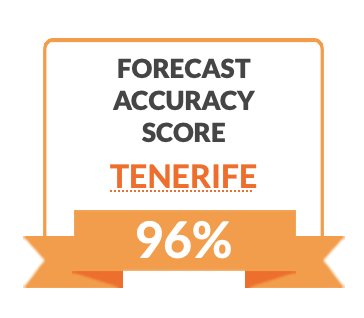
Holiday Weather has since 2016 been tracking our actual weather forecasts to the recorded weather for Tenerife and we have a score of 96% for the accuracy of our forecasts for Tenerife.
As the forecasts are for 25 days, this gives you the assurance that if you are planning a holiday How accurate the weather will be.
7. It’s cheaper to go to Tenerife when it’s hotter !!! 🛫
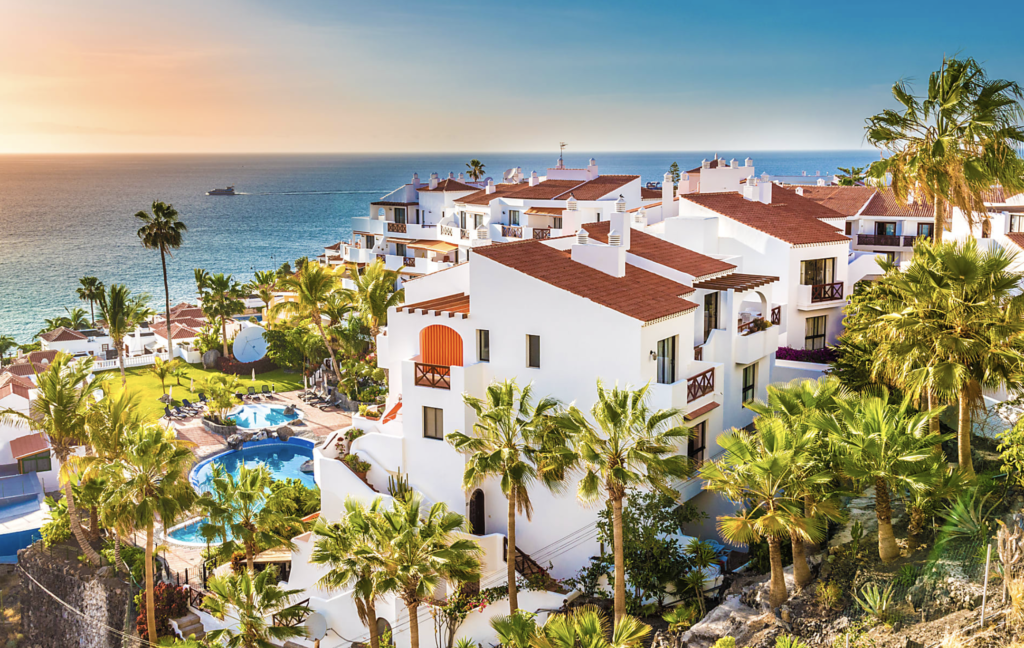
Hotel prices are often cheaper in the summer when it is hotter, this is because Tenerife is a year-round holiday location and the weather in the winter is warm enough for a beach holiday.
Being a 4-hour flight it is easier in the summer to hop on a plane for 2 hours to go to mainland Spain for a holiday such as Costa del Sol or the Balearic Islands like Ibiza and Majorca.
8. The top of Mt Teide is often hotter near the peak than just below 🗻
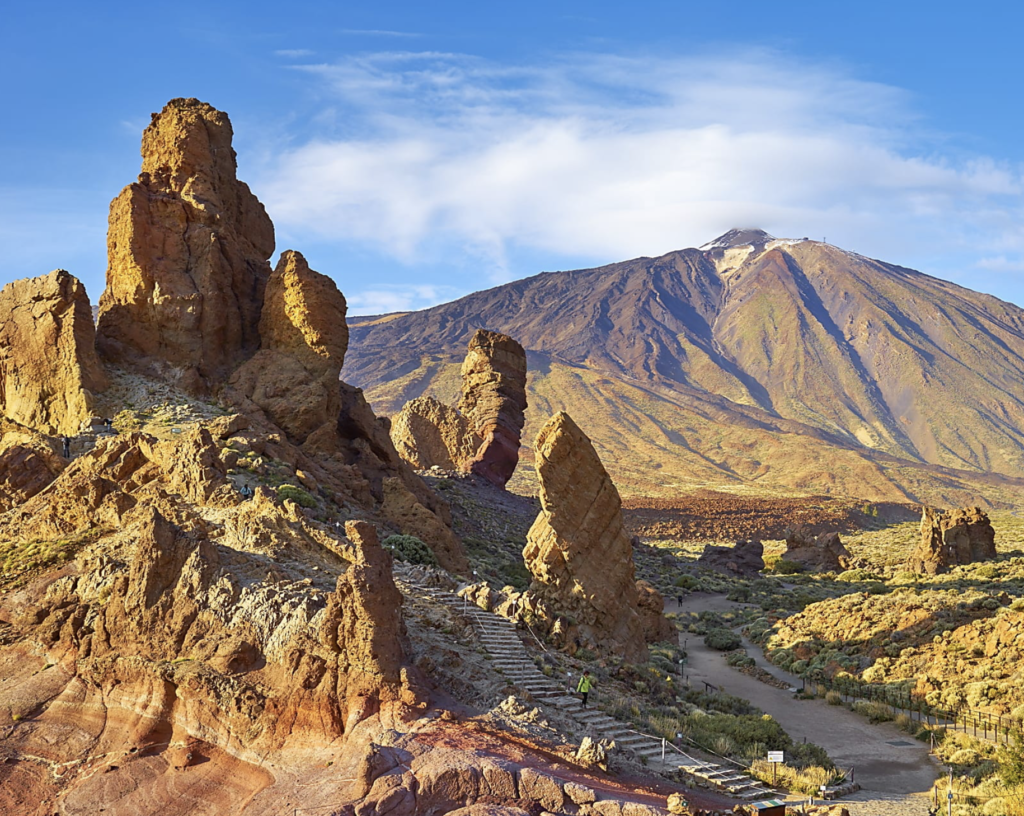
When we say below, we mean at 2000 to 3000m as the summit of Teide is 3708m. This is because there is often cloud cover at 2 to 3000m.
But once you cycle, walk or take the cable car above these clouds there is a clear sky and UV (Ultra Violet ) rays are stronger as they are higher up and there is less atmosphere to absorb them.
9. It does snow in Tenerife ❄️
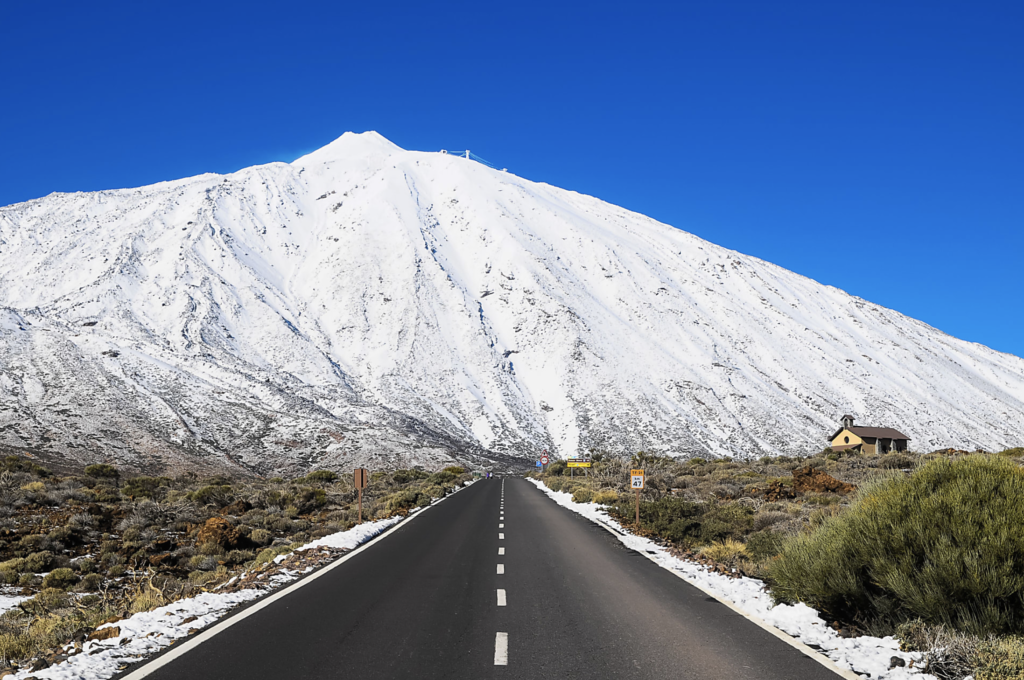
Not often and never at sea level but there has been heavy snow on the approaches to Mount Teide on a few occasions, notably in November 2018 with access to the Teide National Park closed. Snow level was at 1800m.
10. Things to do if it does rain !! 🌧
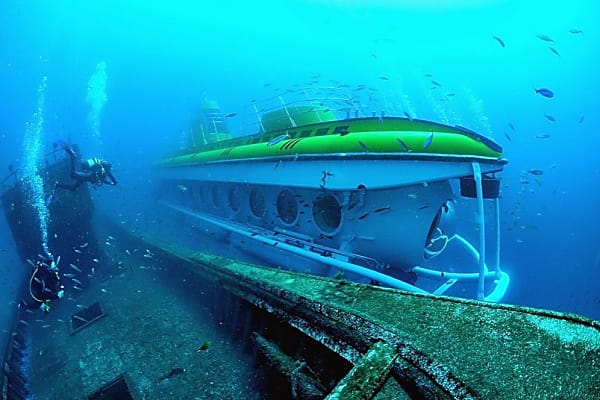
In the unlikely event, it is raining in Tenerife here are things you can do
Shopping in Costa Adeje, go in a submarine from San Miguel Harbor and see below the sea, soak in a spa, go on a Tapas Tour or visit a Bodega!.
Find the sun, it’s highly unlikely that it will be raining all over the island, Teide is probably the most reliable place to find the sun and that will get you off the beach and into the mountains !!

